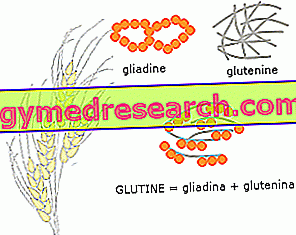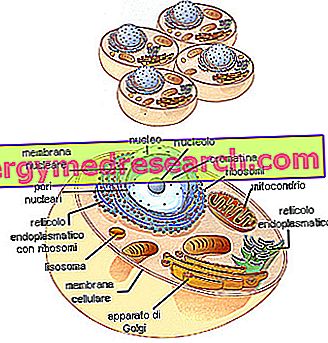Causes
Scurvy is one of the oldest diseases known to man, although it had to wait until 1932 to clearly identify its origin, which we now know is linked to a serious lack of ascorbic acid (vitamin C).
The daily requirement of this vitamin is around 90 mg, but 10 per day are enough to prevent the occurrence of scurvy for several months or years. It is a quantity of negligible vitamin C, contained, for example, in three grams of fresh red peppers, or in 10 grams of kiwi or in 20 grams of orange.

The need for this vitamin increases due to various physical and mental stresses; not by chance scurvy was typical of soldiers and already mentioned sailors (among the crew members the scurvy was manifested with a certain uniformity around the third-fourth month of navigation).
Scurvy aside, there is a certain diversity of opinions on vitamin C dosages necessary for optimal human health; ranging from supporters of the old RDA (60 mg / day) to those of megadoses (2 or more grams per day). Most professionals agree on the usefulness of supplementing the diet with vitamin C, but still recommend dosages of between 180 and 1000 mg per day.
Scurvy can also appear in children between 6 and 18 months fed exclusively with pasteurized milk or boiled cow's milk (Moeller-Barlow's disease). Vitamin C is in fact sufficient in breast milk but not in cow's milk; moreover its content decreases strongly with sterilization. It is therefore no coincidence that vitamin C requirements increase slightly during pregnancy and lactation, but also in situations of alcoholism, heavy smoking, acute diseases and long-term drug therapies.
Scurvy symptoms
To learn more: Symptoms Scurvy
Scurvy is a disease characterized by multiple signs and symptoms. These include digestive disorders, multiple bleeding, anemia and skin hyperpigmentation.
Hemorrhages are the consequence of the increased permeability of blood vessels (vitamin C is essential for the formation of connective tissue, which provides the vascular wall with its strength and flexibility), while gastrointestinal disorders are the result of ulcerative lesions of the intestinal mucosa.
Characteristics of scurvy are also haemorrhages of the oral mucosa, with inflamed, red, swollen and easy to bleed gums, and wobbly teeth predisposed to falling. In the limbs, above all the lower ones, hemorrhages are observed in the form of petechiae located around the hair follicles. Also typical are joint pains (scorbutic arthritis) and a neuropsychiatric symptomatology that includes depression, hysteria and hypochondria (excessive and unfounded concern about one's health).
Gingival bleeding, loss of appetite, fatigue and weakness, decreased ability to work, decreased intestinal iron absorption and delayed wound healing are the onset symptoms of scurvy, which can mask only marginal vitamin C deficiencies.
In the absence of treatment, scurvy can lead to death due to increased susceptibility to infections, severe anemia and severe internal bleeding.
Treatment
To learn more: Drugs for the treatment of scurvy
Vitamin C, at doses of 200-1000 mg / day, is sufficient to induce the regression of scurvy symptoms within 2-4 days. In the preventive context, the prophylaxis of scurvy is based on a diet that includes the regular consumption of fresh plant foods.



